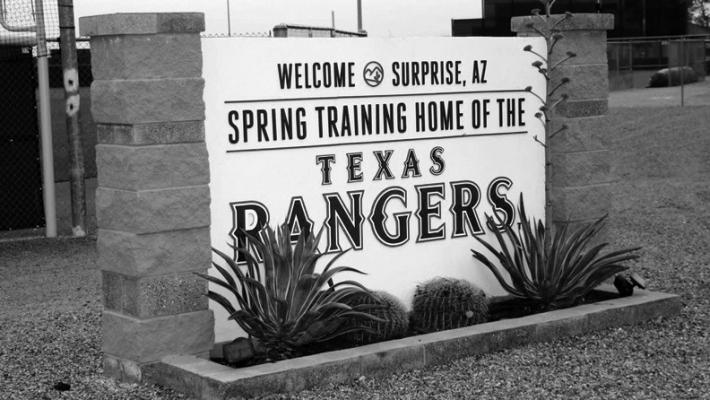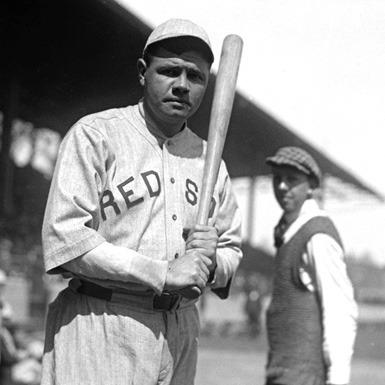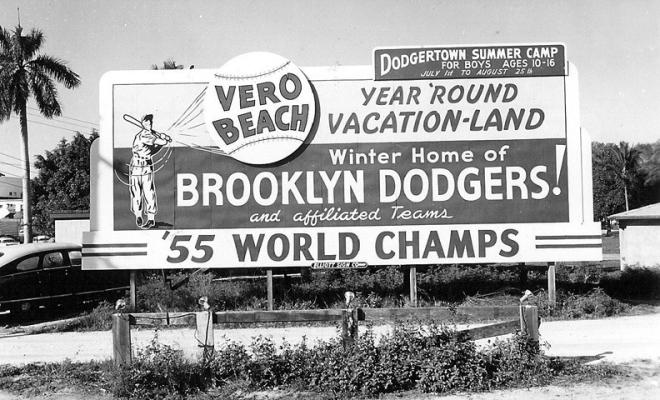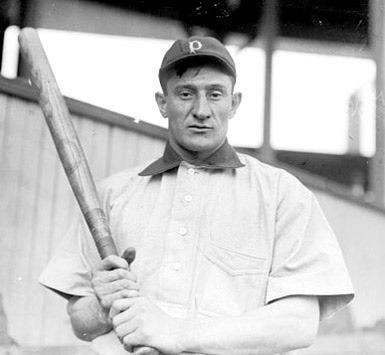It’s time for baseball’s Spring Training season
All it takes is one or two really nice days in February to make me yearn for baseball. It isn’t as intense as it once was. As a youngster, I got out my glove and a ball and started playing catch with myself as early as I could. I was a baseball nerd and in February I knew it was time for Spring Training and I started following the results of spring games poring over the newspaper for all the news I could get. There had been offseason trades, and I wanted to learn as early as I could how the traded players were going to fit in with their new teams. It was nice on Sunday and Monday, and I felt those old juices begin to flow.
Attending Spring Training games was one of those things that was perpetually on my bucket list, but I am beginning to concede that such a dream is one that may never get realized. I decided to satisfy that, at least for now, by simply reading a little of the history of baseball’s Spring Training.
I had heard once that Hot Springs, Ark., has a rich history in connection with Spring Training. I was surprised when I first heard that and I have to confess that I really don’t know much about that part of baseball history. Back in the days when I was a baseball nerd, almost all big league teams trained in Florida. I think there were four teams that went to Arizona, but the majority of teams went to places like St. Pete, Tampa and Vero Beach. I had a classmate whose Dad was the town banker. They went to St. Petersburg, Fla., every other year in March to the St. Louis Cardinals’ training camp. I think that it was in hearing of stories from that adventure that encouraged my adding Spring Training to my bucket list for when I grew up.
In deciding where to turn in reading about Spring Training history, I chose to explore the Hot Springs connection. I had remembered that there was something about Babe Ruth and Hot Springs.
The March 17, 1886 issue of Sporting News has an item telling the world that the Chicago White Stockings (later the Cubs) planned to conduct their Spring Training in Hot Springs. Team owner A. G. Spaulding and manager Cap Anson decided it would be to their advantage to take their players south to get an early start. Hot Springs was chosen because of its relatively mild weather and also because of the hot mineral springs that were a part of that location. Spaulding was later quoted as saying that the springs might clear the players bodies of alcohol, helping them to lose weight and enhancing their physical condition. There were mountains nearby and he felt the players could strengthen their legs by climbing mountains.
Players who later became enshrined in the Baseball Hall of Fame participated in that first venture into Hot Springs, including Anson, John Clarkson and Mike “King” Kelly. The fastest man on the team was Billy Sunday, who later became a fire and brimstone evangelist who drew huge crowds to his traveling revivals. The church I attended in Decatur, Ill., was built on the site of Sunday’s revival tent that stayed in the city for almost a year.
Spaulding’s move encouraged other teams to head south to escape the harsh northern winters and join the White Stockings in getting an early start. Others chose Hot Springs, while some teams went to other Southern locations. Spring Training had become a reality.
One source said that a variety of big league players interacted with the Hot Springs locals in differing ways. John McGraw, who was player/manager of the New York Giants, once was arrested along his friend, C.T. Buckley and charged with gambling. Honus Wagner, famed Pittsburgh Pirates shortstop, helped officiate a basketball game between Hot Springs High School and Memphis High School. The game was played in a skating rink in Hot Springs.
In 1910, Brooklyn manager Bill Dahlen, gave his team a break from practicing and they went across town to watch a game between the Boston Red Sox and the Cincinnati Reds. The Brooklyn players sat on the newly built stands along with 200 other spectators and the structure collapsed about the fifth inning. Nobody was hurt, but the story was told that Brooklyn’s shortstop Tommy McMillan landed in the lap of famed pitcher Cy Young.
Hot Springs continued to have a connection to Major League Baseball until the 1940s, with individual players coming to the spas to work out. The Negro Leagues also used Hot Springs as a training site, with such notables as Satchel Paige, Buck O’Neal, Bullet Rogan and Josh Gibson spending time there.
Babe Ruth’s career changed immensely due to a game played in Hot Springs. Ruth first made the trip to the spa city in 1915 as a young pitcher. In 1918, Ruth was still a Red Sox pitcher, but they were short-handed and needed someone to play first base. Ruth was asked to do so and during a March 17 game, he hit a home run in his first at bat. Later that game, he hit another that is credited with being the first 500-foot homer hit by a Major League batter. The ball sailed over the right centerfield fence and landed in the Arkansas Alligator Farm. The Boston Globe described the hit in this manner: ....the second homer not only scaled the right field barrier, but continued on to the alligator farm, the intrusion kicking up no end of commotion among the “Gators.”
The newspaper account indicates that Ruth’s home run landed in the second circular pool within the Alligator farm. If that is accurate, the distance between where home plate would have been located and the second pool was calculated scientifically in 2011 at 573 feet. The Alligator farm reportedly is still there. Regardless, the experience convinced the Red Sox that they needed Ruth’s bat in the lineup daily.
Babe Ruth has a reputation of being a party animal, but those who witnessed him training in Hot Springs, said he was a player that took his training routines very seriously and was one who worked hard at getting in shape.
As I mentioned earlier, back in the years I was a baseball nerd, there were only 16 Major League teams. Twelve trained in Florida and four in Arizona. Now there are 30 teams with 15 located in Florida and 15 in Arizona. The Florida teams participate in what is called the Grapefruit League and the Arizona teams are in the Cactus League.
In Florida, the Pittsburgh Pirates train in Bradenton, where they have been since 1969; the Philadelphia Phillies are in Clearwater (since 1947); the Toronto Blue Jays in Dunedin (since 1977); the Boston Red Sox (since 1992) and the Minnesota Twins (since 1991) in Fort Myers; the Miami Marlins (since 2002) and the St. Louis Cardinals (since 1998) in Jupiter; the Atlanta Braves in North Port (since 2019); the Detroit Tigers in Lakeland (since 1934); the Tampa Bay Rays in Port Charlotte (since 2009); the New York Mets in Port St. Lucie (since 1988); the Baltimore Orioles in Sarasota (since 2010); the New York Yankees in Tampa (since 1996) and the Washington Nationals (since 2017) and the Houston Astros (since 2017) in West Palm Beach.
In Arizona, the Chicago White Sox (since 2009) and the Los Angeles Dodgers (since 2009) in Glendale; the Cincinnati Reds (since 2010) and the Cleveland Guardians (since 2009) in Goodyear; the Chicago Cubs (since 2014) and the Oakland A’s (since 2015) in Mesa; the San Diego Padres (since 1994) and the Seattle Mariners (since 1994) in Peoria; the Milwaukee Brewers in Phoenix since 1998; the San Francisco Giants (since 1992); the Arizona Diamondbacks (since 2011) and the Colorado Rockies (since 2011) in Scottsdale; the Kansas City Royals (since 2003) and the Texas Rangers (since 2003) in Surprise and the Los Angeles Angels of Anaheim (since 1993) in Tempe.
No one trains in St. Petersburg or Vero Beach any more. They were important locations back in the day. I don’t anticipate that I’ll ever get to a Spring Training game in my lifetime. But nice weather in February brings back the old yearnings.




